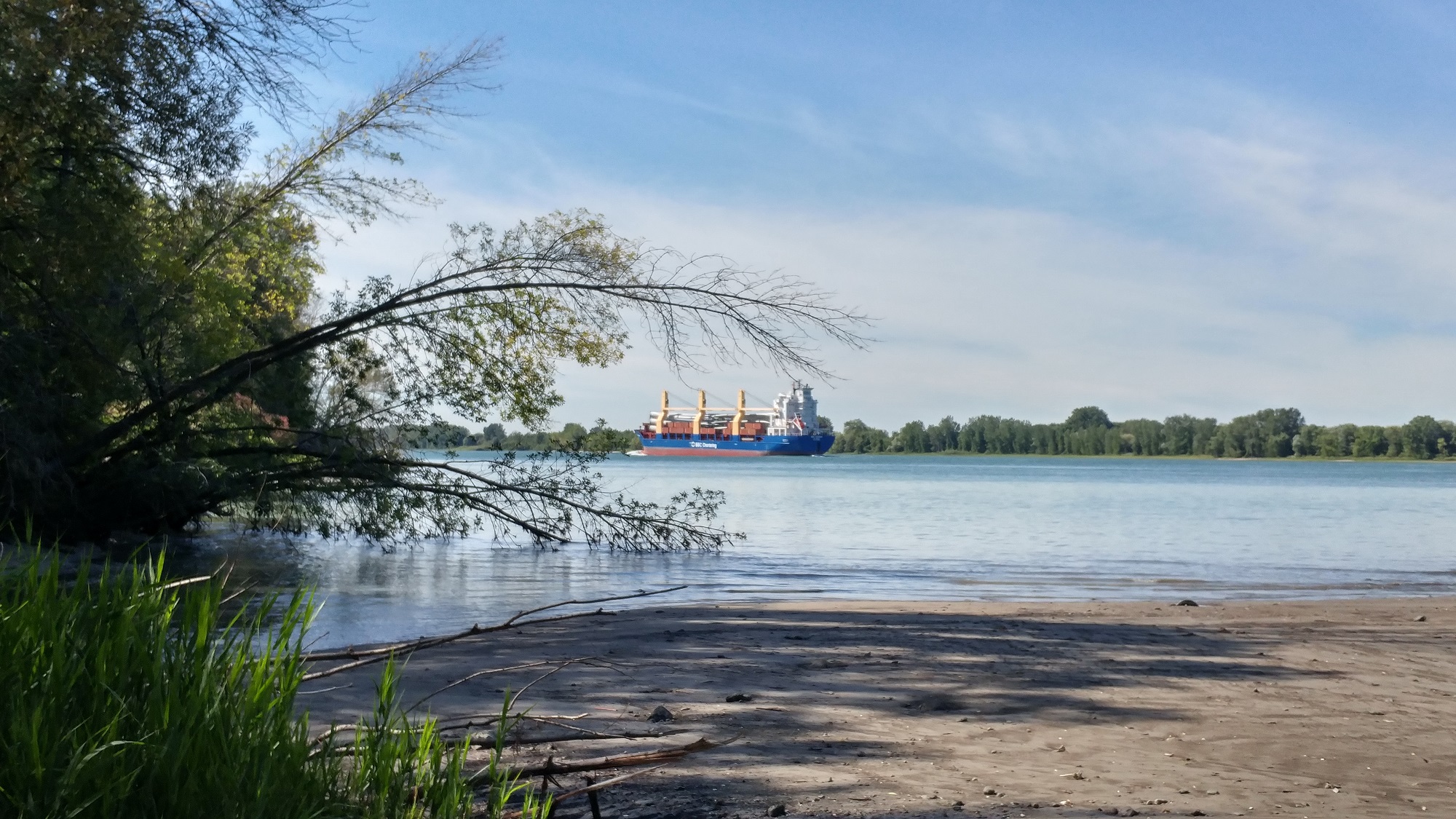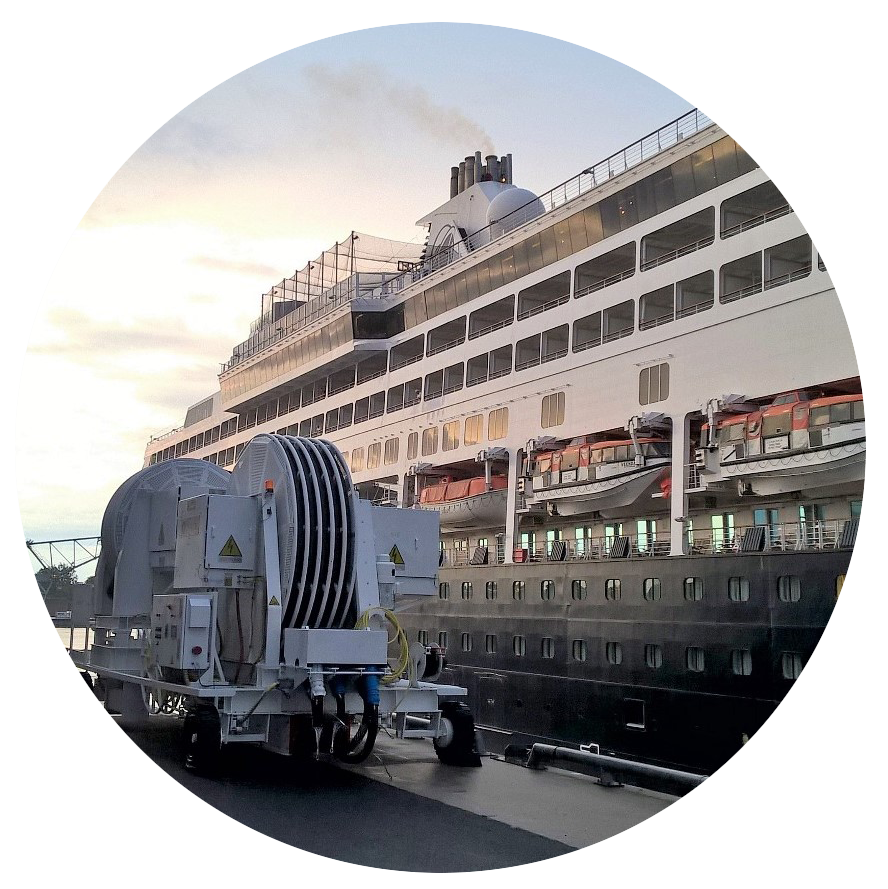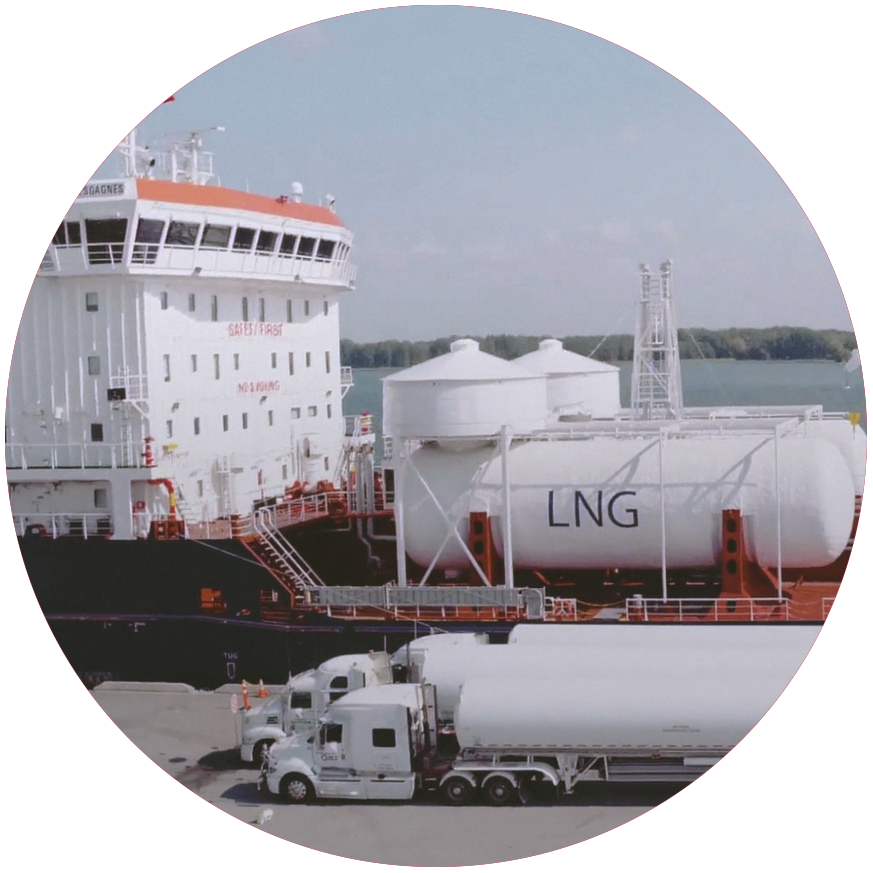
Energy transition and carbon neutrality
Our actions to improve air quality and reduce sources of pollution.
The MPA sets course for carbon neutrality in 2035. Through this commitment, scopes 1 and 2 absolute GHG emissions, for which the MPA is fully responsible, will be reduced by 55% by 2030. Scope 3 absolute GHG emissions, for which the MPA is not fully responsible, will be reduced by 40% by 2040. To achieve these objectives, a range of measures will be implemented or scaled up. This involves adopting new energy practices, and includes shore power and the use of sustainable fuels, along with the reduction of emissions from trucks and port trains. The MPA sets course for carbon neutrality in 2035 (press release) Since 2017, the MPA implemented an electrical power system at its cruise terminal and shore power systems for wintering ships to provide cleaner energy during their stay. It lets cruise ships and wintering vessels turn off their engines while docked, while maintaining air conditioning, refrigeration, security systems and services for the duration of their stay (an average of 10 hours for cruise ships). This new technology reduces noise, smoke and GHG emissions from diesel engine combustion gases by several tonnes of at each connection. In May 2017, the Port of Montreal started to provide dockside liquefied natural gas (LNG) refuelling by truck for commercial vessels. The number of liquefied natural gas (LNG) bunkering operations increased from 4 in 2017 to 48 in 2024. More than 200 LNG bunkering operations carried out in 7 years prevented several thousands of tonnes of GHG emissions. An inventory of GHGs and air contaminants throughout Port territory (Montreal and Contrecoeur) was carried out in 2022 using the tool developed by Transport Canada for ports. The inventory shows that between 2007 and 2022, direct GHG emissions from APM activities (Scope 1) have fallen by 29%, corresponding to a 47% reduction in intensity per tonne handled. The MPA’s vehicle fleet consists almost exclusively of hybrid vehicles. The MPA’s locomotives have been replaced by Genset multi-generator locomotives that reduce GHG emissions by close to 30%. The MPA developed a web and mobile application to optimize truck routes to and from Port of Montreal terminals and ultimately reduce the Port's environmental footprint. This tool displays real-time truck processing times on Port territory so that drivers and dispatchers can make informed choices about their route through the Port, better plan their route to the terminals, avoid traffic congestion and save time, all while reducing trucking-related greenhouse gases (GHGs). Since 2019, this tool has been enhanced and now uses artificial intelligence to provide predictive 24-hour truck wait times. An initial assessment of this initiative’s beneficial impacts is a six-minute reduction in the total processing time for trucks (from the time they entered the Port to the time they left), a drop of more than 200 tonnes of GHGs annually compared to 2018, despite an 8% growth in the number of trucks coming to the Port compared to 2018. Find out more about the Trucking PORTal: Trucking PORTal. Improve air quality
Dockside electrification

A liquefied natural gas supply solution

GHG inventory

Reduce the sources of pollution
Hybrid vehicles
Next generation locomotives
Trucking PORTal
